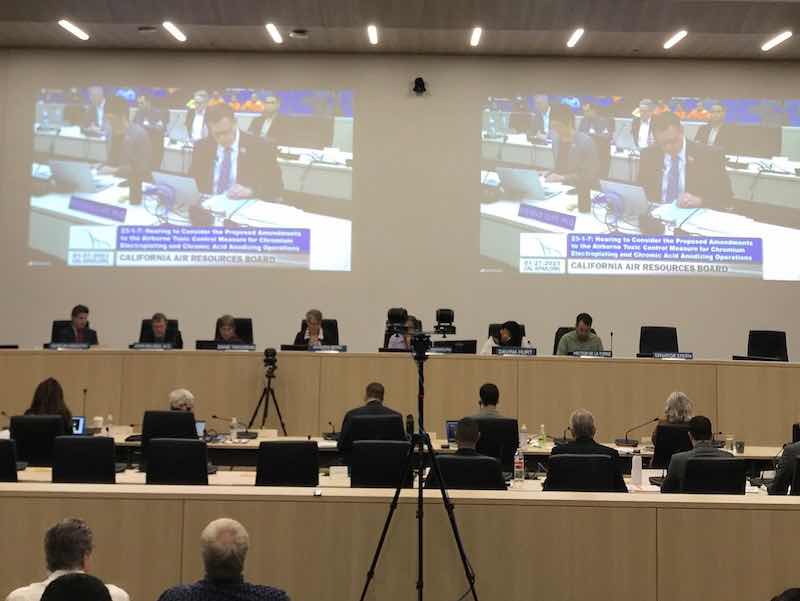Despite some pleas from California environmental groups that the metal finishing industry is causing physical harm to residents, the government agency overseeing a proposed ban on hex chrome processing says there is no evidence.
 Gustavo ArellanoA columnist for the Los Angeles Times asked the California Air Resources Board for any evidence that possible hex chrome emissions from metal finishing operations were leading to higher cancer rates in the areas surrounding the facilities.
Gustavo ArellanoA columnist for the Los Angeles Times asked the California Air Resources Board for any evidence that possible hex chrome emissions from metal finishing operations were leading to higher cancer rates in the areas surrounding the facilities.
“We are not aware of any data,” says Melanie J. Turner, CARB information officer, when LA Times columnist Gustavo Arellano asked the board for stats on elevated rates of cancer among Californians who live near such businesses.
Further, CARB forwarded to Arellano a statement from the California Office of Environmental Health Hazard Assessment “that admitted the same.”
The California Air Resources Board held a January public hearing on its plan to ban decorative and functional hexavalent chromium plating and anodizing operations in the state. The CARB panel reviewed staff recommendations on amendments to its Airborne Toxic Control Measure for chromium electroplating and chromic acid anodizing operations that include:
- Ban any new chromium electroplating and chromic acid anodizing operations starting after Jan. 1, 2024.
- Adding new requirements on Jan. 1, 2026, for hard plating and chromic acid anodizing facilities that implement building enclosure, new emission limits, install controls on qualifying tanks, and new source testing.
- Phase out the use of hexavalent chromium in decorative plating by Jan. 1, 2027
- Phase out the use of hexavalent chromium in functional plating (hard plating and chromic acid anodizing) by Jan. 1, 2039.
The Times’ Arellano column was titled “Why California’s anti-chrome can’t see the forest for the trees” and took issue with those who are calling for a ban on hex chrome when the finishing industry has made significant improvements in reducing emissions and meeting guidelines.
“Banning carcinogenic pollutants is a noble cause,” Arellano wrote. “But the more I read through the California Air Resources Board’s 253-page report, the more I felt its authors were committing two bureaucratic sins more and more in vogue in Sacramento: Create a solution in search of a problem and miss the forest for the trees.”
Arellano argues that “if the mere hint of danger is what’s driving the ban, then the California Air Resources Board is ignoring its own findings.”
He says decorative and industrial chrome accounted for just 0.4% of all hexavalent chromium emissions in 2020 that board staffers were able to trace.
“Far worse polluters are lumber manufacturers, glass producers, and even the gas stoves that so many Californians use,” Arellano says, adding that he felt that the CARB moves are well-intentioned.
“But they target a way of life whose last admirers and defenders are mostly working-class people of color — an easy sacrifice on the altar of saying you’re saving the planet,” Arellano says. “The board admits as much: It forecasts that banning hexavalent chromium in favor of more expensive alternatives will ‘result in a further competitive disadvantage and potential closures of chrome plating businesses’ and ‘negative employment impacts.’”
Read the full column here: https://www.latimes.com/california/story/2023-02-10/california-chroming-ban-hexavalent-chromium



































